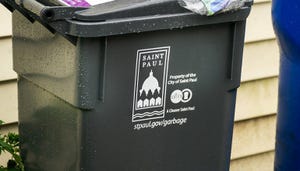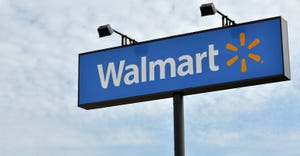WASTE/ENERGY: German Programs Shed Light On Recycling Trends
April 1, 1994
Ann Kulik
Two Deutsche Welle television programs, recently aired in the United States, illustrate how the German news media convey recycling issues to the general public. At the same time, the programs indicate some of the current trends in Germany and citizens' diverse attitudes.
One is a feature-length program that begins by tracing the development of the German Dual System (DSD), famous for the green dot labeling, and reports one organization's endeavors to go beyond packaging waste recycling. Specifically, the West Environmental Center in Cologne markets post-consumer clothing, repaired appliances and custom furniture made from used boards.
Next, the program shows the recycling of common household waste components. During visits to various plants, a voice narrates as the equipment and the operators are pictured in action. These inplant scenes are recorded with the sounds of operations to give the impression of being on-site.
Organic kitchen waste makes up as much as 45 percent of German household waste. Three examples illustrate how potting soil can be produced from biowaste: a small-scale, manual operation in Gummersbach; a similar project in Cologne, begun in 1987 and slated for citywide expansion; and windrow composting of organic materials separated from the waste stream at a resource recovery facility in Erftkreis.
Nearly half of Germany's entire paper production - approximately 6 million metric tons in 1991 - derives from used paper. The recycling process is shown from collection through quality control. Viewers are made aware of the need for careful presorting, the degradation of paper fibers with each recycling and the methods for proper disposal of the resulting waste products.
Glass recycling in Germany has increased from 260,000 metric tons in the 1980s to over 1.1 billion today. To make the process work, citizens are responsible for sorting by color to enable clear glass production, abandoning the common practice of smashing bottles when depositing them in collection bins and including no foreign materials that will ruin the new glass product. At the glass furnace in Dusseldorf, about 110,000 metric tons of glass are recycled each year.
Nearly 100 percent of all scrap aluminum from industrial sources in Germany is recycled. Viewers are shown this process from the shredding stage to the formation of bars weighing six kilograms each. Recycling of aluminum from domestic sources is negligible, however, except for the efforts of a few small groups, because collection networks are lacking. Also its use as a thin coating or layer with paper and plastics makes the aluminum difficult for consumers to distinguish and separate from other materials.
Household plastics recycling has been particularly problematic because of contamination and the wide variety of resins used. The RVE Research and Development Co. in Wessling is working on hydration technology. In a reactor, high temperature, high pressure and chemicals are applied to break mixed plastics down into a liquid containing valuable oils. By means of conventional refining processes, these oils can then be converted into gasoline, heating oils or feedstocks for producing new plastics. More extensive research is required to increase the yield.
The second news program focuses on plastics recycling projects in Berlin. Experiments by the Technische Universitat (TU) are leading to potential approaches to effective recycling on a broad scale. A thermal separator melts down yogurt cups made of polystyrene but leaves the polypropylene containers intact. New chemical solutions can remove the plastic insulation from copper wire and the aluminum coating from used compact discs. A Styrofoam chopping machine reduces packing bulk. TU scientists have worked with a Moscow institute to develop weather-resistant construction components of gypsum and waste plastics.
You May Also Like


